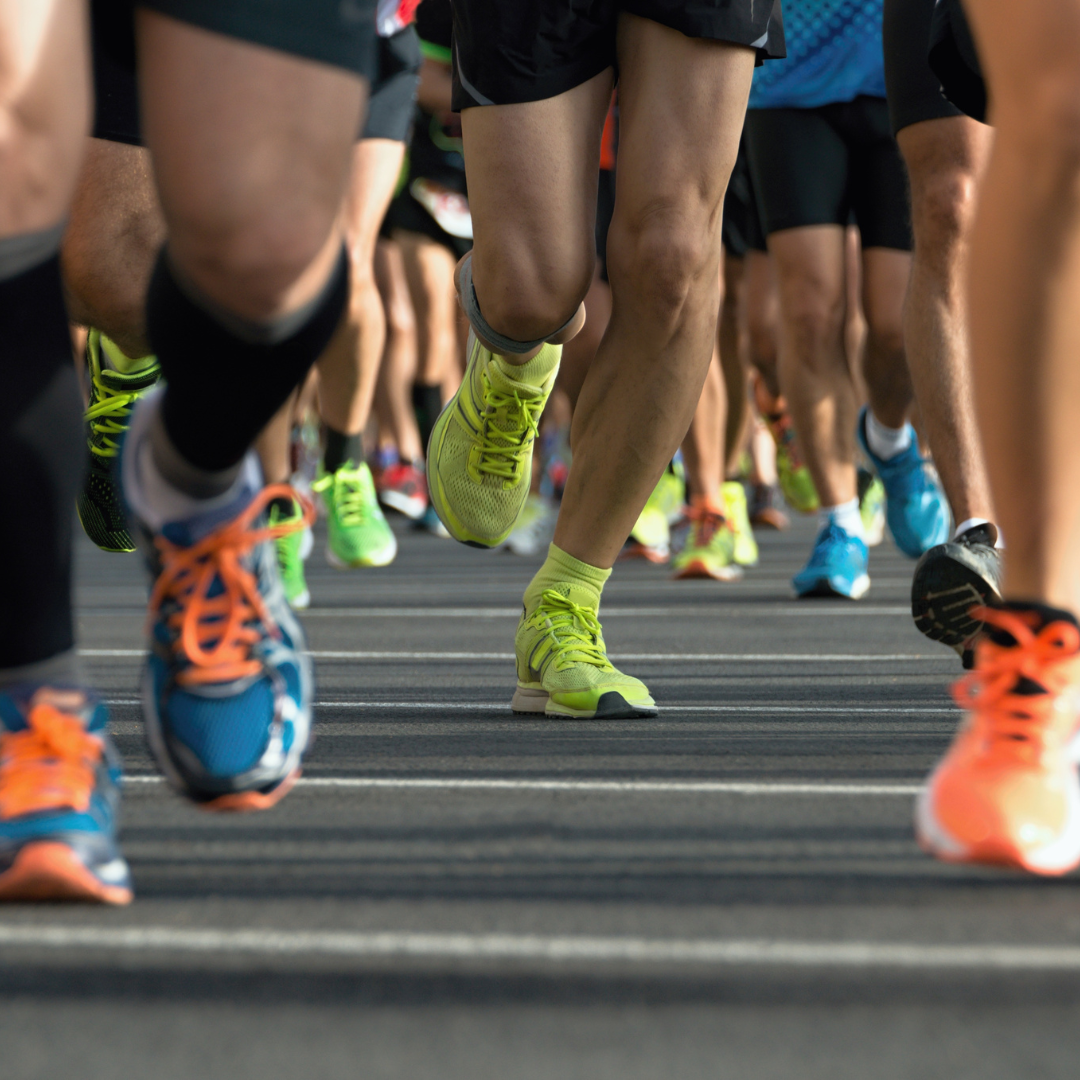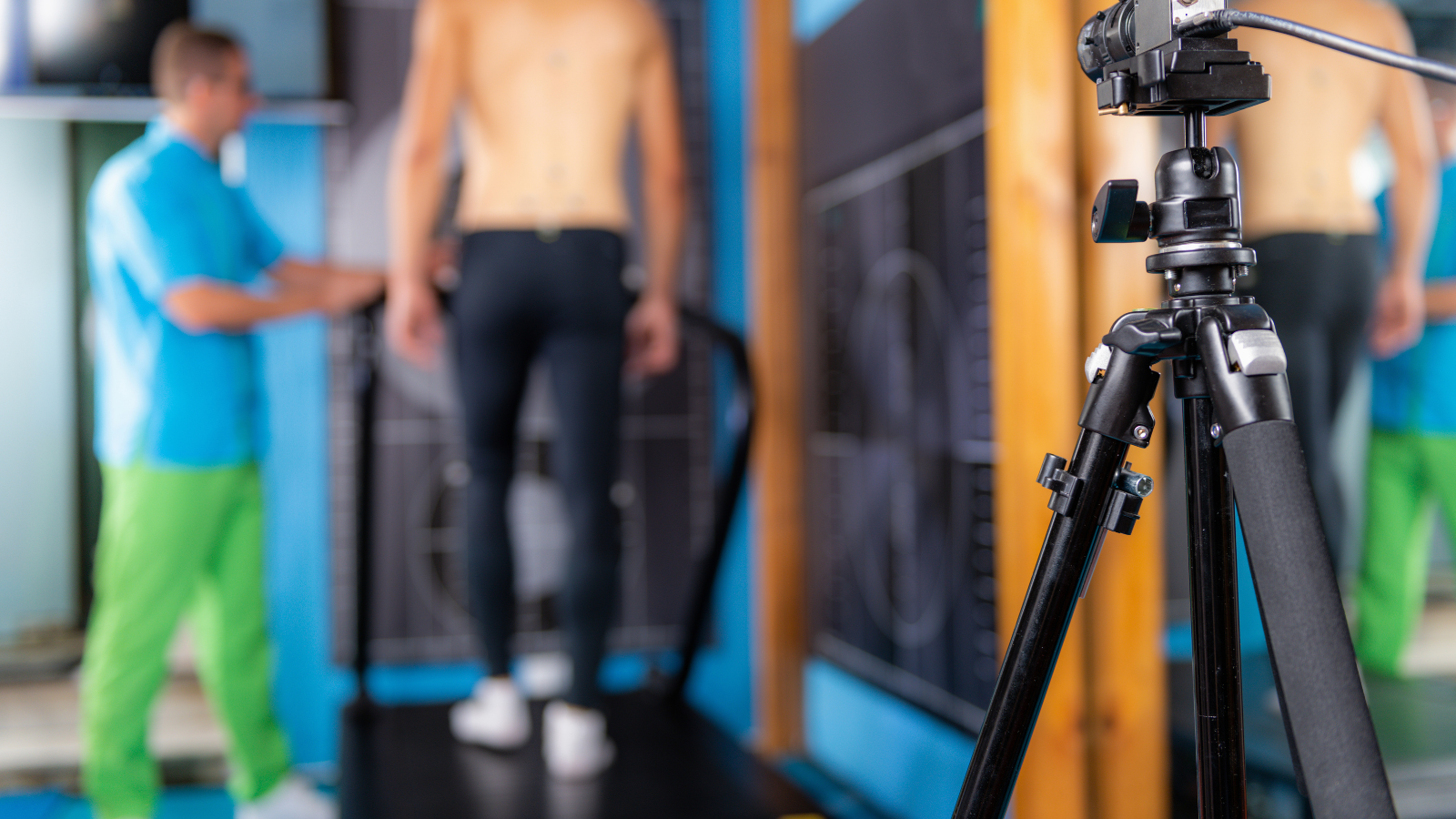Why do you run?
For many, it’s about connection. In fact, data from over 120 million Strava runners (2023–2024) showed that the number one reason people exercise with others is for social connection. For others, running is a coping strategy for stress, a way to find balance in a busy life. And sometimes it’s about goals, like improving fitness, building cardio endurance, supporting weight loss, or training for your first race.
No matter your reason, understanding why you run (and how you run) can shape your training, and physiotherapy can help fine-tune that process.
Running-Related Injuries
Running is a repetitive sport, so most injuries are overuse-related. Pain is your body’s warning sign, and while it may be tempting to “run through it,” ignoring symptoms can turn small issues into long-term problems.
Unlike acute injuries from a fall or accident, running injuries usually build gradually. They are rarely caused by a single factor. More often, they result from a combination of things such as being new to running, inconsistency in training, training errors, previous injury, biomechanics, fatigue or lack of sleep, stress, nutrition, and even mental state.
If you’ve noticed persistent discomfort, stiffness, or pain while running, getting assessed early can make the difference between a quick recovery and a long layoff.
Here are some of the most common patterns I see in clinic:
Knee Pain (Patellofemoral Pain or IT Band Syndrome)
Often linked to overuse, downhill running, weak hip musculature, poor pelvic control, and ankle or foot stiffness and instability. Runners may notice pain around or behind the kneecap, stiffness, or discomfort with squatting or stairs.
Tendinopathies (Achilles, Hamstring, Posterior Tibial, or Peroneal)
Usually tied to faulty mechanics, rapid training changes, poor warm-up, or muscle fatigue. Pain and stiffness are common, especially after rest or first thing in the morning, and may ease as you warm up.
Stress Fractures (Femur, Tibia, 5th Metatarsal)
These occur when training load outpaces recovery. Risk factors include low energy availability, nutritional deficits, hormonal changes, or weak bone density. Certain populations, such as postpartum women, may be more at risk. Pain is often localized and deep, worsening with impact but improving at rest.
Plantar Fasciosis
Linked to overuse, poor mechanics, and weakness in the small muscles of the foot. It presents as sharp heel pain, especially with the first few steps in the morning or after long periods of sitting.
Hip and Low Back Pain
Common in runners with poor core stability and running posture, fatigue, or breathing dysfunction. Symptoms may include stiffness or ache that radiates through the hip, glute, or thigh region.
Running injuries aren’t simple. They usually come from a mix of training errors, biomechanics, recovery habits, and overall health factors.
If you’re noticing patterns such as knee pain on the stairs, heel pain in the morning, or an ache that shows up only after a long run, don’t wait. A physiotherapy assessment can help you:
Identify the root cause
Rule out more serious conditions
Build a tailored recovery and prevention plan that fits your goals
👉 Bottom line: Pain is a signal, not a sentence. If you’re noticing these symptoms, book a running assessment. It’s the fastest way back to pain-free running.
Running Assessment and Treatment Basics
When I assess a runner, I look at the person as a whole. Your job, daily stress, health, and responsibilities, as well as your history as a runner and the injury itself. I’m trying to understand the full picture of how you train, how your body moves, and what might be contributing to your symptoms. Here’s a look at what a typical running assessment includes:
A thorough subjective history
An objective exam (range of motion testing, neural testing, strength testing, and functional movement testing)
Gait Analysis
Subjective (Your Story)
We start by talking about your running background and current concerns:
Running History:
When did you start running and how many years have you been running?
What type of terrain do you enjoy running on?
Race experience, upcoming target races
What does your warm up/cool down look like?
Short term goals, long term goals
Running load - volume, intensity, frequency
Other exercise you participate in in addition to running
What does recovery look like to you?
Injury Specific:
Mechanism of injury
Location of pain
How the pain behaves (better or worse with certain activities, movements, positions or time of day)
Past and current running injuries
Footwear and orthotics (age of shoes, rotation, comfort)
Psychosocial factors (your past experiences with injury, how you’ve managed setbacks)
This gives me context and helps me tailor the assessment to your unique situation.
2. Objective (What We Test)
Next, I look at how your body is moving and functioning:
Active and passive range of motion
Sensation and neural testing (since many leg injuries can actually originate from the low back)
Strength testing
Functional movement testing
Functional Testing Examples
These tests help me see how your body controls movement under load:
Deep squat to check hip, knee, ankle, and spine mobility
Multisegmental rotation to see how well your spine and hips move together
Heel raises to assess calf and foot strength/alignment
Single leg squat to check stability and hip control
Step down – balance on the stance foot, arch use, weight-bearing through the big toe vs rolling to the lateral side, and presence of hip drop
Hopping - can you do it, what’s the power and height like, and how is landing control? Looking at force absorption and knee bend without excessive pronation or supination
3. Gait Analysis
When looking at gait, I assess how the whole body works together during the run. For example I am observing the following:
Landing relative to the center of mass: is the foot striking close to or far away from the body
Width of gait: narrow vs wide base of support.
Vertical displacement: how much the body is moving up and down
Strike type: heel, midfoot, or forefoot landing
Foot mechanics: how the foot moves during load absorption and push-off
Alignment: hip, knee, and lower leg positioning during stance phase.
Pelvic control: stability and movement control with each step.
Arm swing and trunk rotation: how arms coordinate with trunk movement.
Rib cage and pelvis: positioning and stacking for efficiency.
Leg pendulum: movement of the leg during the front and back swing phases.
Hip extension: adequate push-off through the hip at the end of stance.
Dysfunction in any of the above could result in pain while running.
Treatment
Treatment usually blends:
Hands-on therapy to ease pain or stiffness
Targeted strengthening and mobility exercises
Education on running mechanics
Training modifications to reduce load while you heal
The goal is not just to get you out of pain, but to help you run stronger, more efficiently, and with confidence in your body.
Final thoughts
If you’re dealing with a running-related injury or want to improve your performance and prevent future issues, physiotherapy can help. Book a running assessment to learn how small changes in strength, mobility, or mechanics can make a big difference in how you move and feel.





